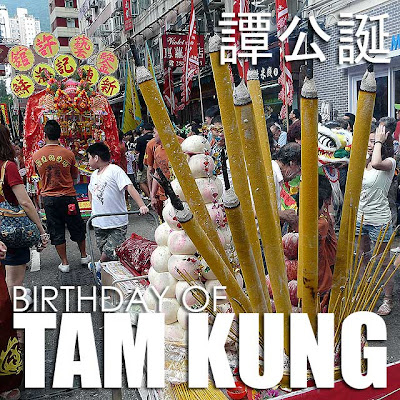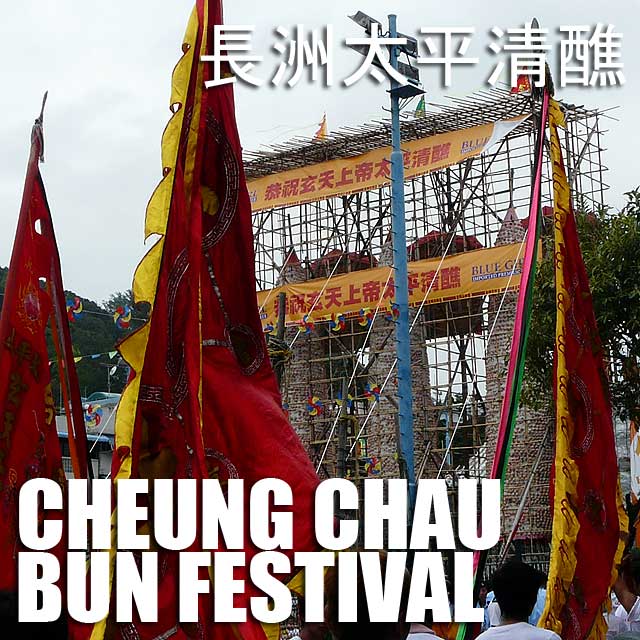
I've been fascinated by the Cheung Chau Bun Festival 長洲太平清醮 ever since my first visit to Hong Kong in 1991. It was one of the festivals Hong Kong promoted in their brochures which I read intently after that trip. But I was too young to explore on my own then. Plus I had to coincide a trip with the festival if I wanted to see it since it happens only once a year, on the eighth day of the fourth lunar month.
So it was a pleasant surprise, after gathering brochures at the HK airport upon our arrival last week, that the Cheung Chau Bun Festival was the next day! There was another festival parade in the morning celebrating the Birthday of Tam Kung 譚公誕. The parade in Cheung Chau was right after lunch so I decided to visit both.
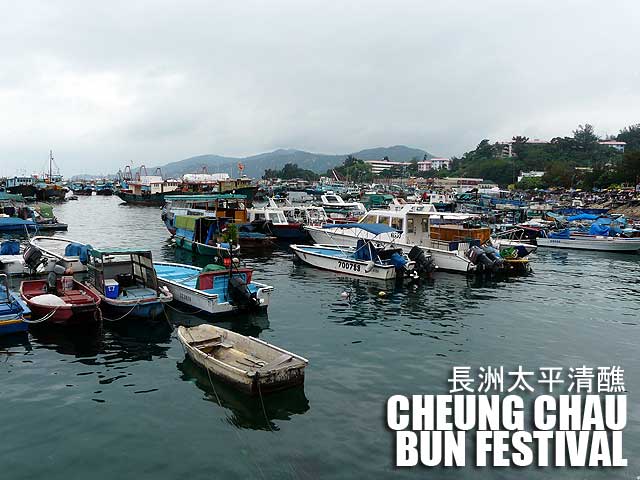
After Shau Kei Wan, I rushed over to Central to catch the ferry to Cheung Chau from Central Pier 5. The ferry terminals are quite a walk from the MTR station. Anyway, when I got there, I was shocked to see literally thousands of people in line.
What the heck! I was already there. And I didn't know when I would have the chance to visit again on the festival day. So I joined the line which was moving inch by inch. It was a mad rush of visitors to Cheung Chau! That's why the tourist information desk advised me to be in Cheung Chau before 11 a.m.
The fast craft takes about 30 minutes and costs HK$32.20 on public holidays. When I arrived in Cheung Chau, the parade-in-the-air was making its way down the main road. But with so many people, it was really difficult to navigate the parade route or even take decent photos for that matter.
It is said that the festival traces its origins to a plague on the island hundreds of years ago. The villagers of Cheung Chau disguised themselves as deities to scare away the evil spirits responsible for the plague.
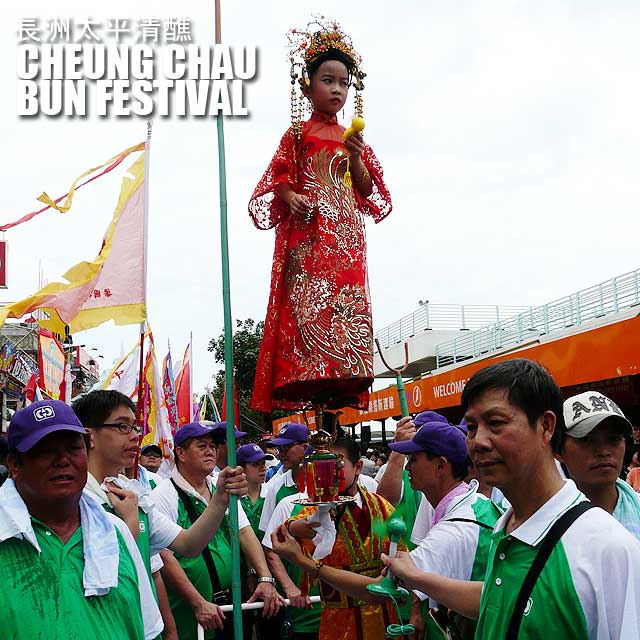
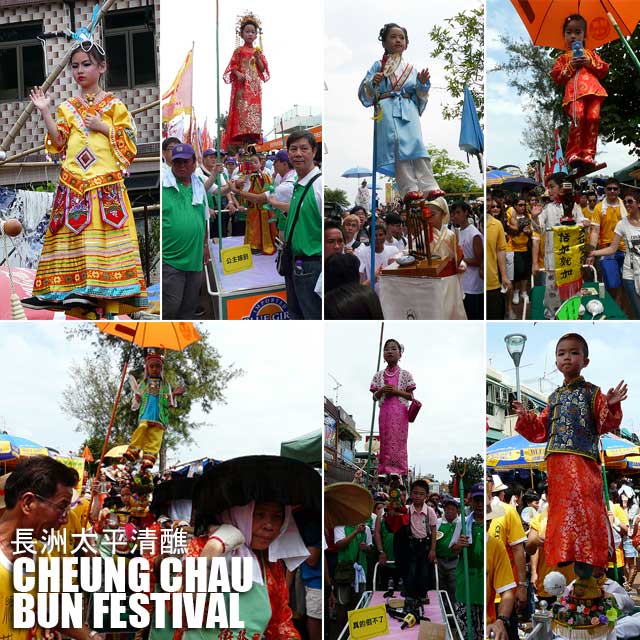
Aside from the staple lion dances and dragon dances we see in many Chinese celebrations, this parade is called parade-in-the-air because of the heavily made up children dressed as mythological figures and modern Chinese heroes who are suspended above the crowd on the tips of swords, paper fans and other items. It's actually an illusion because the children are secured by steel frames, an intricate system of rod and wires underneath their clothing, making it appear that they are gliding through the air. It is said that parents consider it a great honor for their kids to be part of the parade.
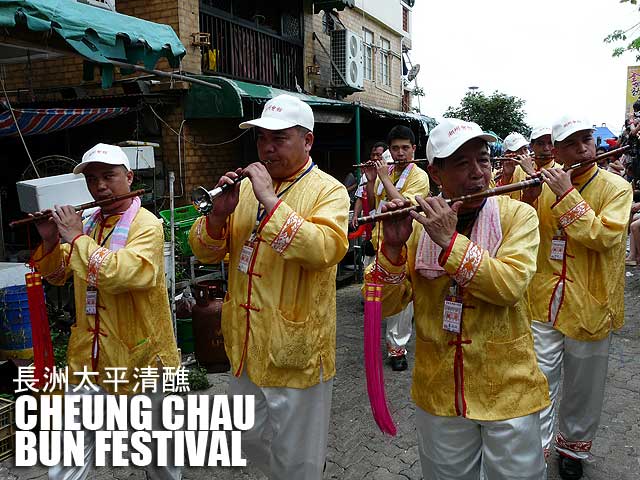
Kung fu club members, Taoist priests in traditional attire and ensembles with gongs, drums and other musical instruments join the parade that makes its way around the narrow streets of the island.
Of course, my visit would not be complete if I did not see the bun towers. So I walked towards the Pak Tai Temple where the bun mountains or bun towers were located. There are three giant 60-feet bamboo towers covered with buns. One of the events of the festival is the bun-snatching race at midnight. Young men would race up the towers and get as many buns as they could. The higher the buns, the better fortune for the participant's family.
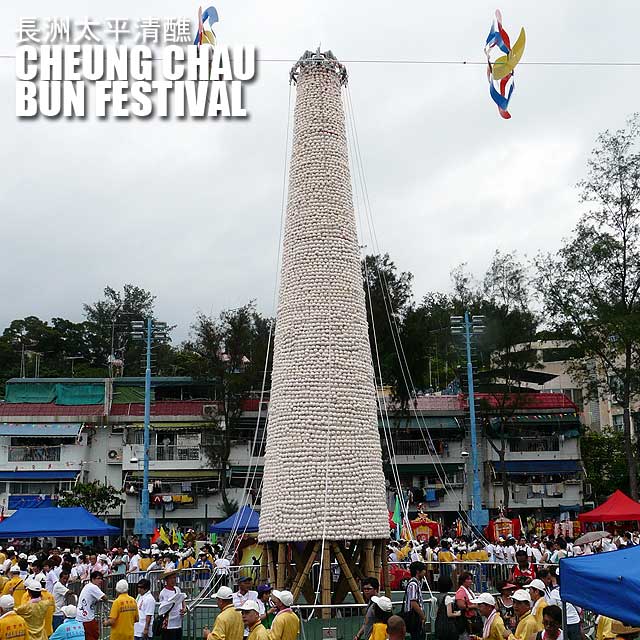
After an accident in 1978 where one of the bun towers collapsed, the government stopped the bun-snatching tradition. It was reintroduced in 2005 with safety measures put into place including a separate steel bun mountain structure and mountain-climbing equipment for the 12 well-trained athletes selected for the activity.
Anyway, I didn't stay too long since I knew that the crowd would all rush back to Central after the parade. So I wiggled my way back to the ferry terminal. I was in line for quite a while. As I boarded the ferry, I could see the line outside the building stretch back really far. Thank God I decided to leave early or I would have missed catching up with my family in Hong Kong Disneyland.
If you do plan to visit the Cheung Chau Bun Festival, here are some tips:
1. With the mammoth crowd that visits Cheung Chau during the festival, it's best to join a guided tour since they take the group on a private boat (so no lines at the ferry terminal) and you get to watch the parade at the official grandstand. Contact the Hong Kong Tourism Board to inquire about the tours. It's not cheap at HK$640 (2010 tour fee). But you basically pay for comfort and convenience.
2. If you want to explore on your own and have time and funds to spare, then book a stay for a night or two in Cheung Chau. At least you also get to witness the bun-snatching competition at midnight and don't join the crowds on the ferry.
3. But if you're on a tight budget or schedule, just make sure you're in Cheung Chau as early as possible (before lunch) to avoid the crowds. It's a good thing the Hong Kong Tourism Board prepares a Hong Kong Cultural Celebrations Activities Guide which lists down the schedule of events and activities of the various festivals held in May.

